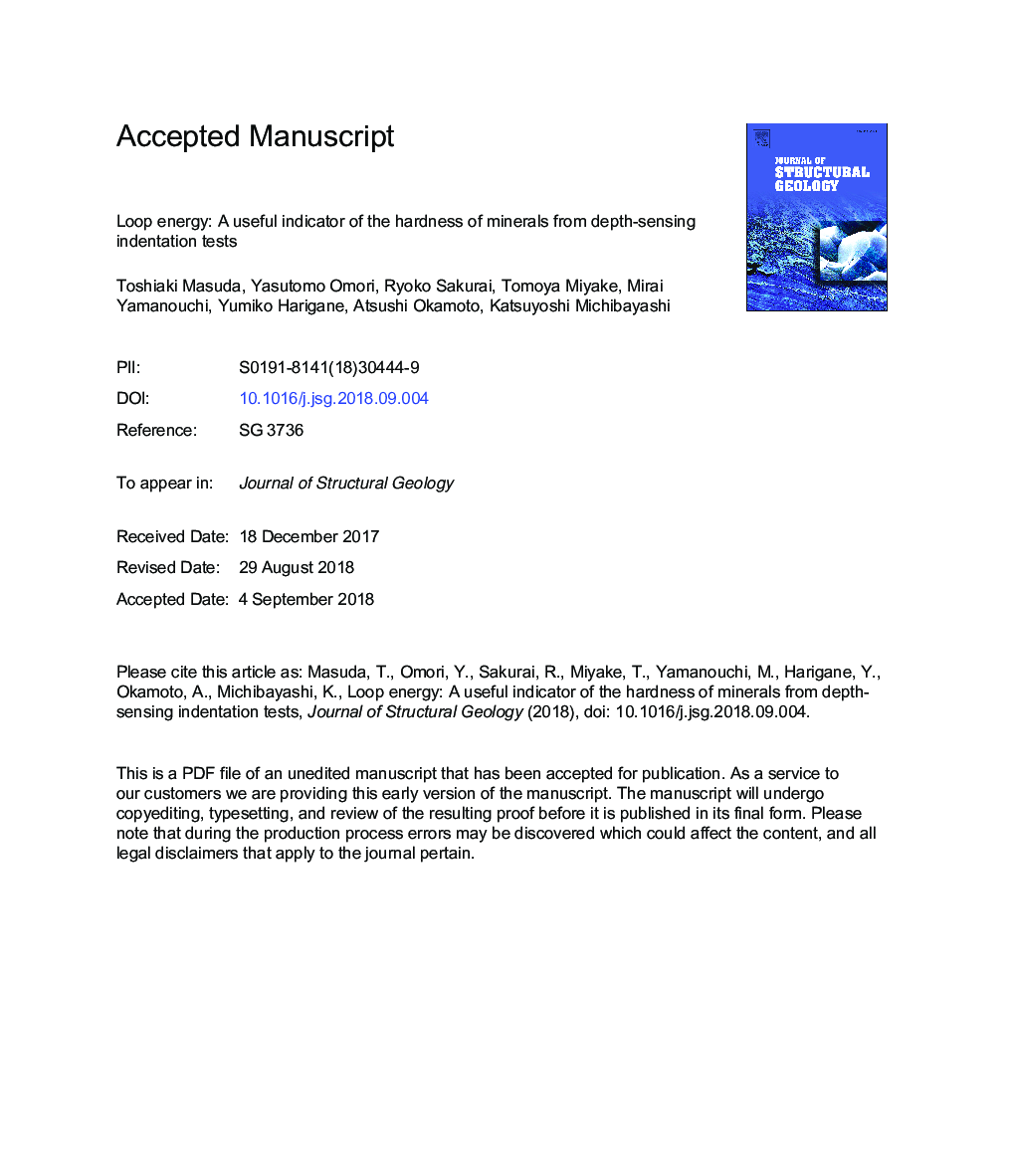| Article ID | Journal | Published Year | Pages | File Type |
|---|---|---|---|---|
| 10224389 | Journal of Structural Geology | 2018 | 40 Pages |
Abstract
Depth-sensing indentation tests were performed to obtain the loop energy (equivalent to the energy consumed to produce the indentation) and the residual depth of the indentation using a triangular pyramidal diamond indenter for the minerals in Mohs hardness scale except for diamond, as well as other minerals (apophyllite, forsterite, and tourmaline), at a maximum load ranging from 30 to 100â¯mN. A new graphic presentation is proposed that shows the hardness of minerals in log(penetration depth)âlog(loop energy) space. The data for each mineral under different loads give a straight regression line with a slope of 2.6-2.9 (except for talc, which yields a slope of 2.2), while the data for different minerals under a given load yield a straight regression line with a slope of 1.1-1.2. A theoretical analysis of ideal materials, in terms of log(penetration depth)âlog(loop energy) space, shows the existence of two series of parallel regression lines with slopes of 3 (data for each mineral at different loads) and 1 (data for different minerals under a given load). The results show a slight deviation between the measured and theoretical slopes, probably reflecting a progressive change in the mechanical properties of the minerals during the indentation tests.
Keywords
Related Topics
Physical Sciences and Engineering
Earth and Planetary Sciences
Geology
Authors
Toshiaki Masuda, Yasutomo Omori, Ryoko Sakurai, Tomoya Miyake, Mirai Yamanouchi, Yumiko Harigane, Atsushi Okamoto, Katsuyoshi Michibayashi,
